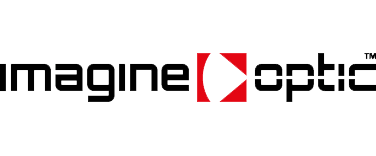Optical Metrology: Unraveling the Science of Light Measurement
Optical metrology, an intriguing field of scientific measurement, delves deep into the intricacies of light and its properties. In this article, we will explore the meaning of optical metrology, the metrology of light, the applications of Shack-Hartmann wavefront sensors, their principles, optical measurement methods, and the significance of display metrology. To further enhance your understanding of this fascinating discipline, we will refer to Imagine Optic, a renowned leader in the field of OM, for insights into their innovative solutions.
Meaning of Optical Metrology:
OM is the science and art of measuring and characterizing optical systems, including light sources, lenses, mirrors, and more. It plays a crucial role in ensuring the accuracy and reliability of optical devices, from microscopes to telescopes. This type of metrology encompasses a wide range of techniques and instruments, all designed to quantify and understand the behavior of light.
Metrology of Light:
The metrology of light involves the precise measurement of various optical properties of light, such as intensity, wavelength, polarization, and phase. This is essential for applications in fields like astronomy, telecommunications, and laser technology, where the quality and characteristics of light must be controlled and optimized for specific purposes.
Applications of Shack-Hartmann Wavefront Sensors:
Shack-Hartmann wavefront sensors are invaluable tools in optical metrology. They find applications in adaptive optics systems, medical imaging, and more. They enable the real-time monitoring and correction of optical aberrations, leading to improved imaging quality. These sensors are used in fields as diverse as ophthalmology, where they enhance vision correction procedures, to astronomy, where they sharpen the images obtained from telescopes.
Principle of Shack-Hartmann:
Shack-Hartmann wavefront sensors work on a simple principle. They capture an incoming wavefront, typically from a telescope or camera, and split it into an array of small lenslets. Each lenslet focuses a portion of the incoming light onto a corresponding detector. By analyzing the displacement of these focal spots, the sensor can calculate the wavefront’s shape and determine aberrations.
Optical Methods of Measurement:
Optical measurement methods include a wide array of techniques, such as interferometry, spectrometry, and imaging. These methods are used to measure various optical properties, including reflectance, transmittance, and polarization. Optical metrologists employ these techniques to ensure the quality and functionality of optical components.
Display Metrology:
In the modern world, displays are ubiquitous, from smartphones to large-scale digital signage. Display metrology is a specialized branch of metrology that focuses on the measurement and evaluation of display devices. This includes assessing parameters like color accuracy, luminance, and uniformity, which are critical for creating high-quality displays.
For a deeper understanding of optical metrology and its practical applications, you can explore Imagine Optic‘s offerings. Their MESO Metrology System provides cutting-edge solutions for characterizing optical surfaces with nanometer precision. The Optical Engineer Companion, another innovative product, offers valuable tools for optical designers.
In conclusion, optical metrology is an essential field that underpins numerous industries. It enables us to harness the power of light, correct imperfections, and unlock the full potential of optical systems. The applications of optical metrology are vast and continue to grow as technology advances, making it a pivotal area of scientific research and development.
For more information on optical metrology and its applications, please visit Imagine Optic’s website and explore their products, further pushing the boundaries of optical measurement and technology.
